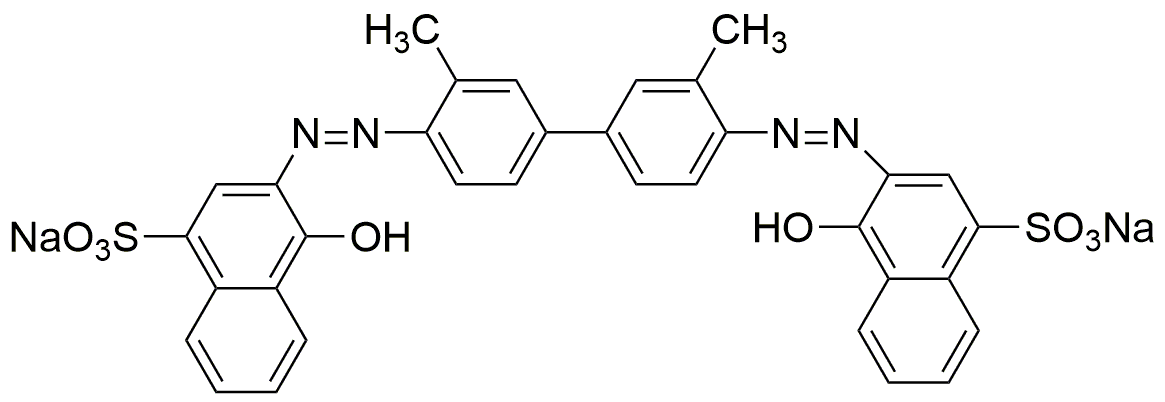Azo blue is widely utilized in research focused on:
- Dyeing and Textile Industry: Azo blue is commonly used as a dye for fabrics, providing vibrant colors and excellent lightfastness, making it ideal for clothing and upholstery.
- Food Industry: This compound serves as a food coloring agent, enhancing the visual appeal of various products, such as candies and beverages, while complying with safety regulations.
- Biological Staining: In laboratories, Azo blue is employed as a staining agent in microscopy, helping researchers visualize cellular structures and processes more clearly.
- Cosmetics: The chemical is also found in cosmetic products, where it is used to impart color to items like lipsticks and eyeshadows, ensuring a wide range of shades for consumers.
- Environmental Monitoring: Azo blue can be utilized in analytical chemistry for detecting pollutants in water samples, aiding in environmental protection efforts and compliance with regulations.
General Information
Properties
Safety and Regulations
Applications
Azo blue is widely utilized in research focused on:
- Dyeing and Textile Industry: Azo blue is commonly used as a dye for fabrics, providing vibrant colors and excellent lightfastness, making it ideal for clothing and upholstery.
- Food Industry: This compound serves as a food coloring agent, enhancing the visual appeal of various products, such as candies and beverages, while complying with safety regulations.
- Biological Staining: In laboratories, Azo blue is employed as a staining agent in microscopy, helping researchers visualize cellular structures and processes more clearly.
- Cosmetics: The chemical is also found in cosmetic products, where it is used to impart color to items like lipsticks and eyeshadows, ensuring a wide range of shades for consumers.
- Environmental Monitoring: Azo blue can be utilized in analytical chemistry for detecting pollutants in water samples, aiding in environmental protection efforts and compliance with regulations.
Documents
Safety Data Sheets (SDS)
The SDS provides comprehensive safety information on handling, storage, and disposal of the product.
Product Specification (PS)
The PS provides a comprehensive breakdown of the product’s properties, including chemical composition, physical state, purity, and storage requirements. It also details acceptable quality ranges and the product's intended applications.
Certificates of Analysis (COA)
Search for Certificates of Analysis (COA) by entering the products Lot Number. Lot and Batch Numbers can be found on a product’s label following the words ‘Lot’ or ‘Batch’.
*Catalog Number
*Lot Number
Certificates Of Origin (COO)
This COO confirms the country where the product was manufactured, and also details the materials and components used in it and whether it is derived from natural, synthetic, or other specific sources. This certificate may be required for customs, trade, and regulatory compliance.
*Catalog Number
*Lot Number
Safety Data Sheets (SDS)
The SDS provides comprehensive safety information on handling, storage, and disposal of the product.
DownloadProduct Specification (PS)
The PS provides a comprehensive breakdown of the product’s properties, including chemical composition, physical state, purity, and storage requirements. It also details acceptable quality ranges and the product's intended applications.
DownloadCertificates of Analysis (COA)
Search for Certificates of Analysis (COA) by entering the products Lot Number. Lot and Batch Numbers can be found on a product’s label following the words ‘Lot’ or ‘Batch’.
*Catalog Number
*Lot Number
Certificates Of Origin (COO)
This COO confirms the country where the product was manufactured, and also details the materials and components used in it and whether it is derived from natural, synthetic, or other specific sources. This certificate may be required for customs, trade, and regulatory compliance.

